The Battle of Belleau Wood stands as a defining moment in Marine Corps history, with their grit and determination earning the enduring respect of allies and foes alike. The fierce battles and the resulting memorials pay tribute to the sacrifices made by American forces, cementing Belleau Wood’s place as a critical turning point in World War I that ultimately led to the Allied victory. Yet, the full story of this pivotal engagement and its strategic significance remains largely untold. What lessons can we draw from the courageous actions of the Marines at Belleau Wood, and how did this battle shape the course of the war on the Western Front?
Key Points
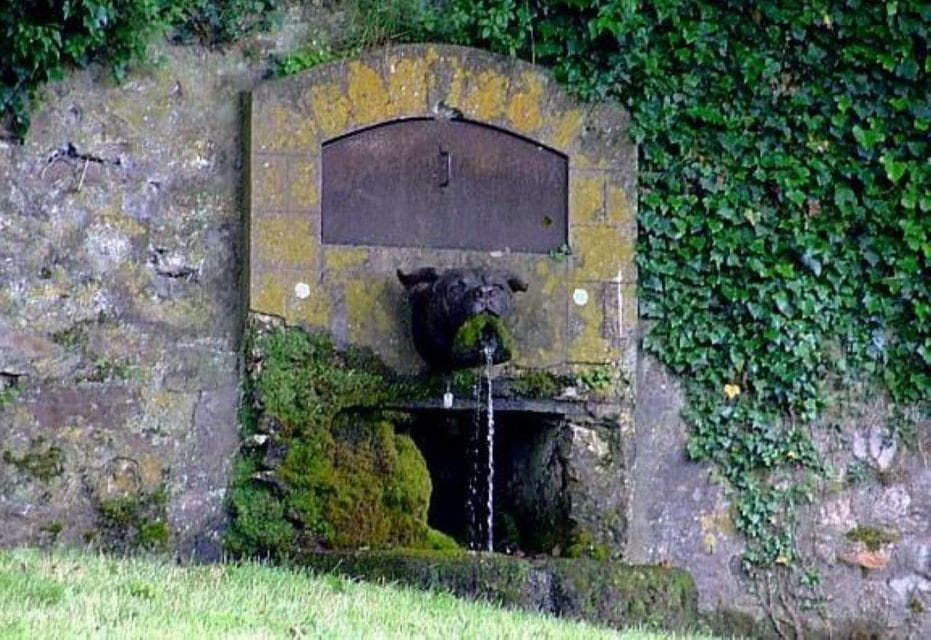
- The Battle of Belleau Wood marked a critical turning point in World War I, where the U.S. Marine Corps fought with determination to halt the German advance.
- The U.S. 2nd Division, including the 6th Marine Regiment, engaged in fierce battles to capture key strategic positions like Lucy-le-Bocage and Bouresches.
- Heroic actions of officers like Captain Duncan and Lieutenant Osborne, who received the Medal of Honor, highlighted the bravery of American troops.
- Aisne-Marne American Cemetery and the German Cemetery stand as solemn reminders of the immense human toll and sacrifices made during the battle.
- Securing Hill 204 and the Croix Rouge Farm was crucial for the Allies to prevent the German army from reaching Paris and threatening the war effort.
Hallowed Ground for US Marines
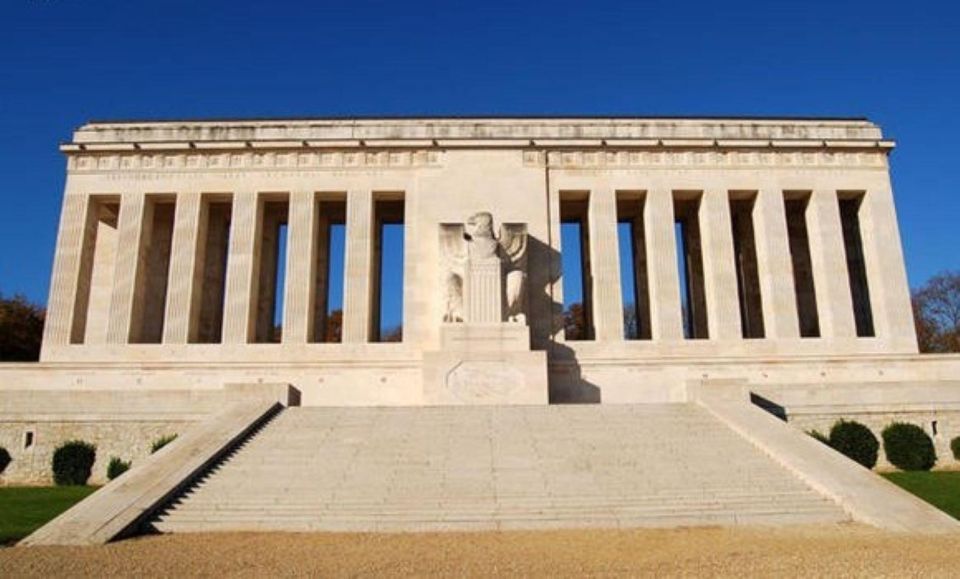
Belleau Wood stands as hallowed ground for the United States Marine Corps, a sacred battlefield where they demonstrated their valor and resilience during the pivotal Second Battle of the Marne.
The remains of the battle, including foxholes and trenches, are a testament to the fierce fighting that took place here.
The 2nd Division monument pays tribute to the Marines who fought and fell, while the visitor center and memorials provide a window into this historic engagement.
For the Marine Corps, Belleau Wood represents a defining moment, where their grit and determination earned them the enduring respect and admiration of the American people.
Monuments and Memorials of the Battle
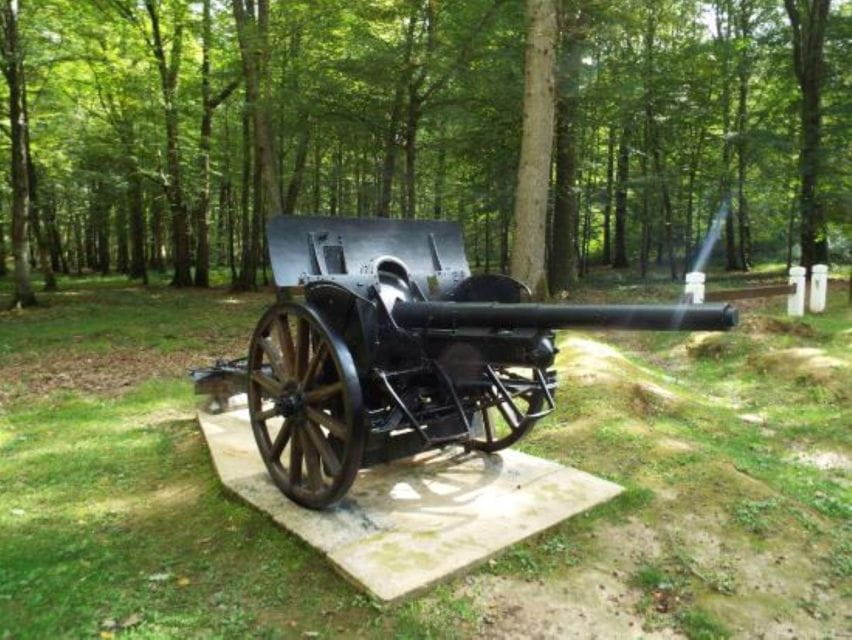
Along the tranquil roads of northern France, visitors can discover a tapestry of monuments and memorials that honor the sacrifice and valor of the American forces during the battle for Belleau Wood.
These sacred sites include:
- The 2nd Division monument, which stands as a solemn tribute to the Marines who fought and died in this pivotal engagement.
- The Aisne-Marne American Cemetery, where the grave of Lieutenant Osborne, a Medal of Honor recipient, can be found alongside the names of fallen Marines and Soldiers.
- The Quentin Roosevelt Fountain, a poignant offering from the Roosevelt family in memory of their son, who made the ultimate sacrifice during the battle.
Lucy-le-Bocage and Bouresches Engagements
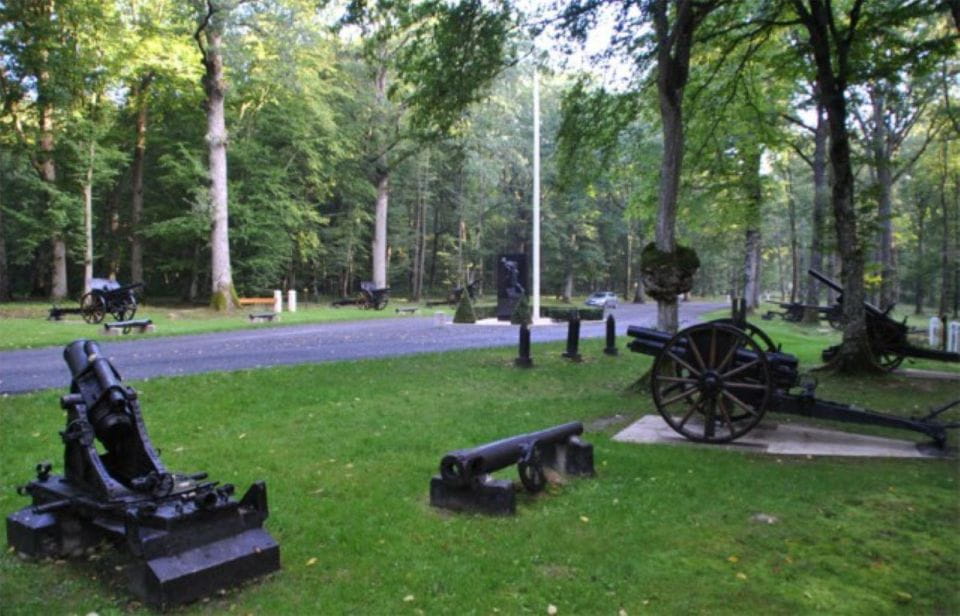
In the villages of Lucy-le-Bocage and Bouresches, American forces engaged in fierce battles to secure key strategic positions during the Battle of Belleau Wood.
The 2nd Division’s 6th Marine Regiment fought to capture Lucy-le-Bocage, facing stiff German resistance. A monument now stands in the village, honoring the sacrifices of the Marines.
In Bouresches, the Marines’ attack saw heroic actions by Captain Duncan and Lieutenant Osborne, the latter of whom was later awarded the Medal of Honor for his bravery.
The Aisne-Marne American Cemetery contains Osborne’s grave, as well as the names of other missing Marines and Soldiers who fell during this pivotal engagement.
American and German Cemeteries
Throughout the region, visitors can often find several cemeteries that serve as solemn reminders of the immense sacrifices made during the Battle of Belleau Wood and the larger Second Battle of the Marne.
Among the most notable are:
- The Aisne-Marne American Cemetery, which contains the grave of Medal of Honor recipient Lieutenant Osborne and lists the names of missing Marines and Soldiers.
- The German Cemetery, which offers a panoramic view of the battlefield and honors the fallen from the opposing side.
- The Oise Aisne American Cemetery, where the grave of poet Joyce Kilmer, a member of the 69th Infantry Regiment, can be found.
These hallowed grounds provide a poignant opportunity to reflect on the human toll of the fierce battles that unfolded in this pivotal region.
Hill 204 and Croix Rouge Farm
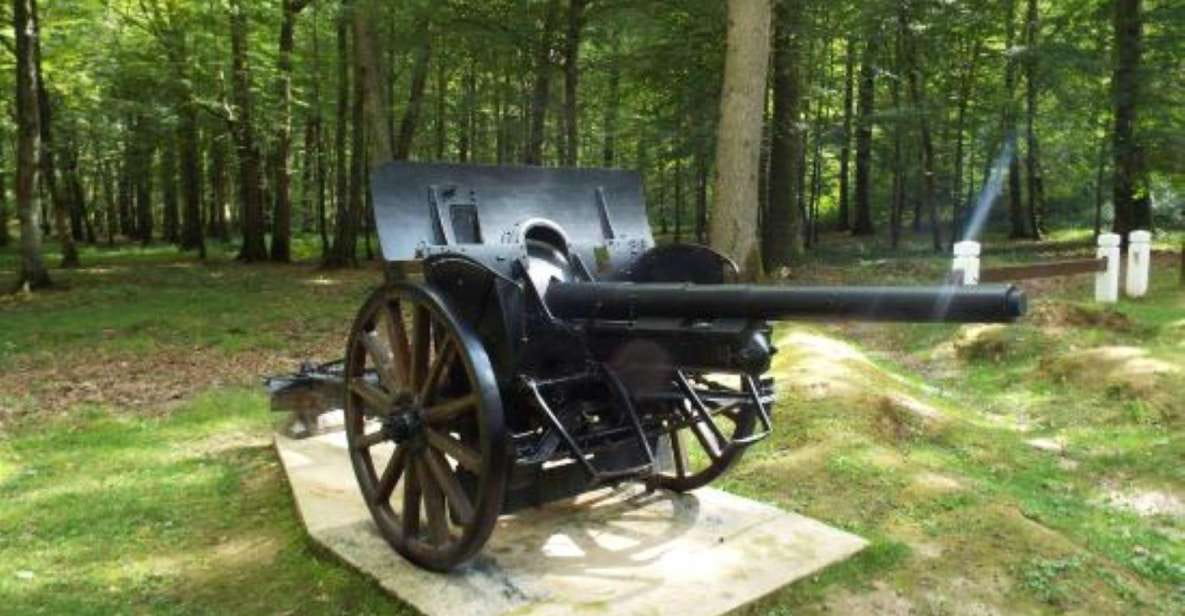
Towering above the surrounding landscape, Hill 204 serves as a prominent monument and interpretive center, offering visitors a panoramic view of the historic Belleau Wood battlefield.
This strategic vantage point was the site of fierce fighting during the Second Battle of the Marne, as the U.S. 42nd ‘Rainbow’ Division and 167th Infantry Regiment battled to secure the high ground.
The remains of the Croix Rouge Farm, a fortified German position, can still be seen, a testament to the heroic actions of the American forces who fought to dislodge the enemy.
Today, these sites stand as solemn reminders of the sacrifices made by those who fought to protect freedom and democracy on the fields of France.
Quentin Roosevelt Fountain Tribute
The Roosevelt family graciously offered a fountain in memory of their son Quentin, a young aviator who made the ultimate sacrifice during World War I. This poignant tribute stands as a solemn reminder of the personal toll the war took, honoring the life and legacy of a fallen hero.
The Quentin Roosevelt Fountain serves as a moving monument, symbolizing the profound grief and patriotism of a family who lost a beloved son in the conflict.
Visitors can reflect on the immense sacrifices made by the youth of America, whose lives were cut short while defending their country on the battlefields of Europe.
This tribute underscores the human dimension of war, reminding us that beyond the statistics and strategies, there were individuals with dreams and loved ones who paid the ultimate price.
Strategic Significance of the Battle
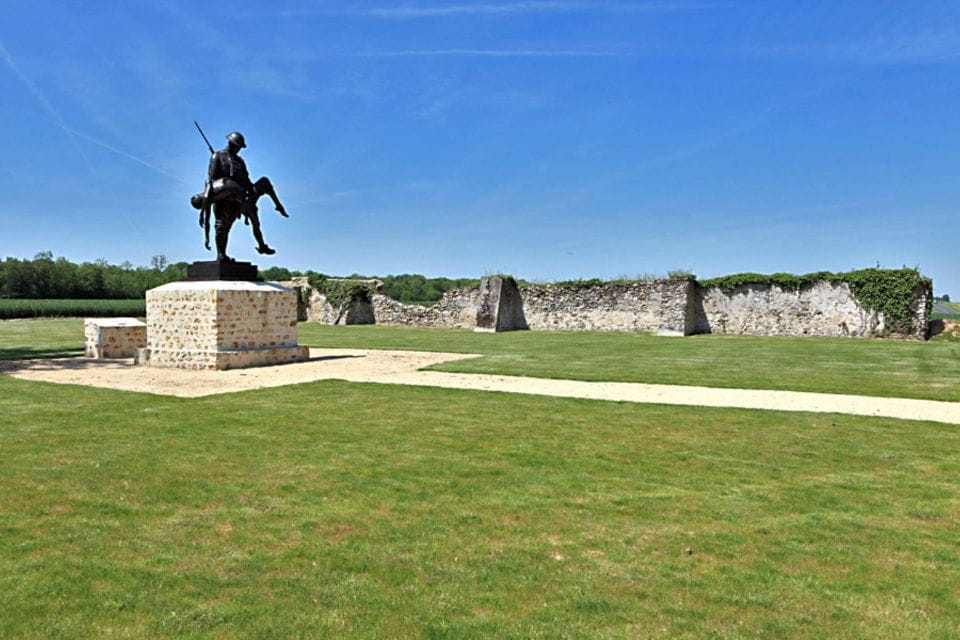
The Battle of Belleau Wood and the Second Battle of the Marne marked a critical turning point in World War I, as the heroic actions of American forces helped halt the German advance and ultimately turn the tide of the war. The strategic significance of this battle cannot be overstated. American troops, including the famed U.S. Marine Corps, fought with immense bravery and determination, securing key locations like Hill 204 and the Croix Rouge Farm. Their efforts were crucial in preventing the German army from reaching Paris and threatening the Allied war effort. The sacrifices of the fallen, memorialized in cemeteries and monuments, forever cemented Belleau Wood’s place in history as hallowed ground.
| Strategic Location | Significance |
|---|---|
| Hill 204 | Panorama view, interpretive center |
| Croix Rouge Farm | Remains of German fortifications, key battle site |
| Lucy-le-Bocage | 2nd Division monument, 6th Marine Regiment |
| Bouresches | Attack by Marines, heroic actions |
| Aisne-Marne American Cemetery | Graves and memorials of fallen troops |
Legacy of Belleau Wood Victory
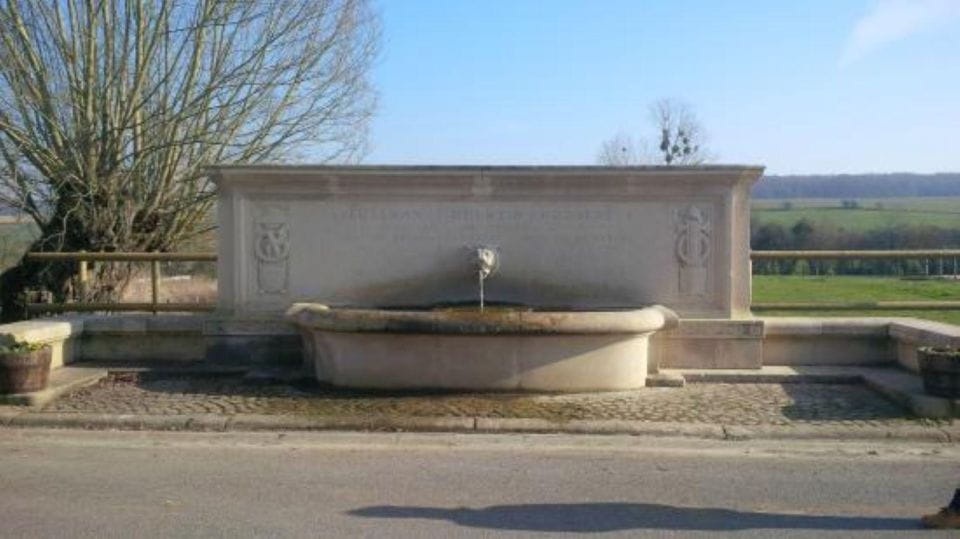
The heroic actions of American forces at Belleau Wood decisively halted the German advance, forever etching this battle’s legacy as a pivotal moment in World War I. Their unwavering courage and determination not only saved Paris from capture but also marked a critical turning point that ultimately led to the Allied victory.
Today, Belleau Wood remains a sacred ground for the U.S. Marine Corps, with:
- Preserved remains of the battle, including foxholes and trenches
- Monuments and memorials honoring the sacrifices of the 2nd Division
- A visitor center that educates the public on this historic engagement
The bravery and sacrifice of the American troops at Belleau Wood have become a symbol of the nation’s military prowess and a source of immense pride for generations of Marines.
Frequently Asked Questions
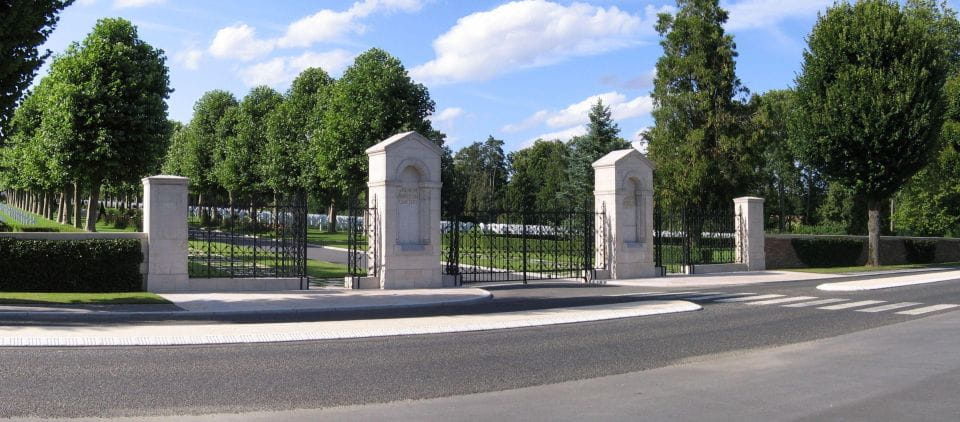
How Long Did the Battle of Belleau Wood Last?
The Battle of Belleau Wood lasted nearly a month, from June 1-26, 1918. It was a fierce and costly battle that’s considered one of the defining battles of the U.S. Marine Corps.
What Types of Weapons Were Used in the Battle?
The Marines at Belleau Wood used a variety of weapons, including rifles, machine guns, grenades, and artillery. They faced off against German forces wielding similar firepower in the intense close-quarters fighting that defined this pivotal World War I battle.
What Was the Total Number of Casualties on Both Sides?
The battle resulted in heavy casualties on both sides, with around 10,000 American and over 17,000 German soldiers killed, wounded or captured in the fierce fighting around Belleau Wood and the Château-Thierry salient.
Were There Any Notable Individuals Who Fought in the Battle?
Several notable individuals fought at Belleau Wood, including Captain Hamilton Marine Duncan, who received the Medal of Honor for heroic actions, and Lieutenant Joyce Kilmer, a renowned American poet, who was killed in the battle.
How Has Belleau Wood Influenced Military Strategy Over Time?
Belleau Wood’s dogged defense by Marines against German forces has influenced military strategy, inspiring tenacity and commitment in the face of adversity. Its legacy endures as a testament to the power of perseverance and adaptability on the battlefield.
Recap
Belleau Wood stands as a defining moment in U.S. Marine Corps history, where their grit and determination earned enduring respect.
Memorials and cemeteries immortalize the sacrifices made, cementing the battle’s strategic significance in World War I.
The Allied victory at Belleau Wood proved a critical turning point, ultimately leading to the end of the conflict.
The legacy of this hallowed ground continues to inspire Marines to this day.
